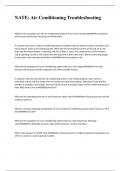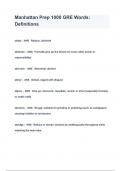Exam (elaborations)
Ruppel's Manual of Pulmonary Function Testing 11th Edition Test Bank by Carl Mottram
The document is not the original book; it's a handy collection of pre-written exam questions and answers that helps educators gauge students' understanding of the course material. It’s a great resource for creating quizzes and exams, saving teachers time and ensuring students are assessed f...
[Show more]












